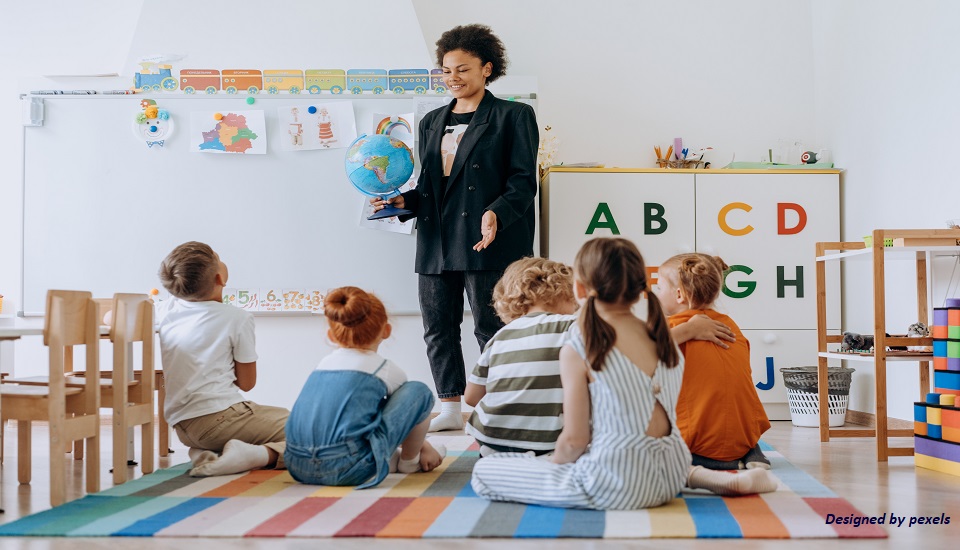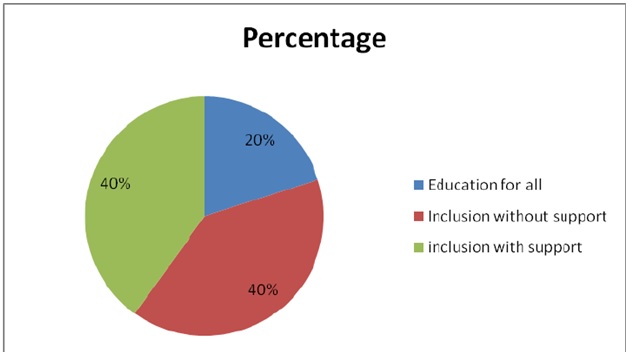Classroom Intervention Strategies For Teachers: Enhancing Student Learning And Progress
28th July 2023
Every child is born with a different set of unique abilities and strengths. In schools also every child has different needs and teachers need to understand them to become effective teachers. According to a survey of researchgate.net, a very less percentage of the education institute follows education for all.

Source: researchgate.net
To change this scenario many teachers are starting to use classroom intervention methods, with which teachers can be able to understand every individual student's needs and help them to achieve success academically.
With the help of this method teachers can provide targeted and personalized instructions, this classroom intervention will create a bridge for the gaps in knowledge and skills for every child which will ensure every student has an equal opportunity to achieve success.
So, without any further delay, let’s get started.
Types of Classroom Interventions
There are several types of classroom interventions that teachers can utilize to meet the diverse needs of their students. Let's explore the most commonly used intervention strategies:
1. One-on-One Interventions
One-on-one interventions involve providing individualized support to students who require additional assistance in a particular area. These interventions are often targeted at students who have experienced a dip in their progress or at students with special needs.
2. Group Interventions
Group interventions create opportunities for students to learn collaboratively and engage in discussions and activities related to specific subjects or concepts. By working in groups, students can benefit from sharing ideas, listening to their peers, and considering different perspectives.
3. Classroom-based Interventions
Classroom-based interventions take place within the regular classroom environment and aim to provide additional support to students without removing them from their peers. Working closely with the teacher or teaching assistant, selected students receive structured and targeted instruction to address specific areas of need.
4. Behavioural Interventions
Behavioural interventions focus on addressing challenging behaviours that may hinder students' learning and progress. These interventions are particularly beneficial for students with an education, health, and care plan (EHCP) that identifies behaviour as a key area of need.
Before jumping in to the topic, can we ask one question? Do you follow us on Social Media? We regularly share upgraded educational content, tips, feedback and more. Check us out by clicking the profiles here - Facebook / Twitter / LinkedIn / Pinterest / Instagram / YouTube
5. Social, Emotional, and Wellbeing Interventions
Not all interventions focus solely on academic data. Social, emotional, and well-being interventions provide students with a safe and supportive space to explore their thoughts, feelings, and overall mental health. These interventions are particularly useful for students who have experienced trauma, loss or are struggling with their emotional well-being.
6. Peer Tutoring
Peer tutoring is a widely used intervention strategy that pairs a more experienced student with a peer who may be struggling in a particular subject or skill. This approach benefits both the tutor and the student receiving support, as it promotes social interaction, fosters empathy, and enhances learning outcomes.
7. Meta-cognition and Self-regulation
Meta-cognition and self-regulation interventions focus on helping students develop a deeper understanding of their own learning processes. These interventions provide students with strategies for setting goals, monitoring their progress, and evaluating their learning.
8. Homework
Homework can serve as an effective intervention strategy when used strategically. It can reinforce concepts taught in class, provide opportunities for independent practice, and promote self-directed learning.
Tips for Creating Successful Interventions
Creating successful interventions requires careful planning and consideration. Here are some tips to help teachers design effective interventions:
1. Make Learning Fun & Engaging
To capture students' attention and make the learning experience memorable, incorporate elements of fun and creativity into the intervention. Use hands-on activities, interactive games, and real-life examples to engage students and enhance their motivation to learn.
2. Connect to Early Learning
Ensure that the intervention is connected to prior learning and the broader curriculum. Help students make connections between concepts and subject areas, reinforcing their understanding and promoting transfer of knowledge.
3. Every Student is Different
Personalize the intervention to meet the unique needs of each student. Take into account their interests, strengths, and learning styles. Tailor the content, instructional strategies, and materials to ensure maximum relevance and engagement.
4. Focus on Staff Well-being
Consider the workload and well-being of staff involved in delivering interventions. Ensure that they have the necessary support and resources to effectively implement the intervention. Encourage collaboration and create a supportive environment that fosters professional growth and motivation.
5. Leverage Staff Strengths
Utilize the strengths and expertise of staff members when assigning roles for intervention delivery. Identify the areas where each staff member excels and allocate responsibilities accordingly. This strategic approach optimizes the impact of the intervention and ensures that students receive the best possible support.
6. Monitor Progress and Provide Feedback
Consistently monitor student progress throughout the intervention and provide timely and constructive feedback. Use formative assessments to gauge understanding and identify areas for improvement. Regular feedback motivates students and helps them track their own progress.
7. Reflect and Share Best Practices
Reflect on the effectiveness of the intervention and identify areas for improvement. Share successful intervention strategies with colleagues to promote a culture of continuous improvement. Collaborate with other teachers to exchange ideas, learn from each other's experiences, and refine intervention practices.
Quality Education is Every Children’s Right
Every child is born unique in his/her own way and has different strengths and abilities compared to each other. Those teachers who have pursued courses like Certificate in Counselling Course for Teachers know it really well and they know using classroom intervention method is the key to provide quality education to each and every child in the classroom.
By using the above-mentioned tips on applying classroom intervention methods in an effective manner, teachers can make sure that each and every student is getting equal support in learning and in the overall progression journey.
Find the right course for you and try out the course. Contact us at 1-213-233-9490. You can also mail us at asiancollegeofteachers@gmail.com.
Written By : Abhishek